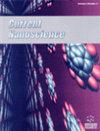Polymer Nanocomposites: A Review on Recent Advances in the Field of Green Polymer Nanocomposites
IF 1.5
4区 材料科学
Q4 BIOTECHNOLOGY & APPLIED MICROBIOLOGY
引用次数: 0
Abstract
: In order to address environmental issues, polymer nanocomposites are becoming more and more popular because of their remarkable functionality. Their use in various fields is highlighted by their special physicochemical features (i.e., stability, high reactivity, robustness, regenerability, etc.), conductivity, electronic compatibility, quick interfacial contacts, simplicity of functionalization, simplicity of synthesis, interface-to-volume ratio, and low cost. Green polymer nanocomposites have drawn a lot of attention for use in a variety of applications to preserve the environment. Because they are made of eco-friendly materials, they are frequently utilised in the automobile, building, packaging, and medical industries. Eco-friendly solutions to the problems caused by plastic trash are biodegradable polymers produced from renewable sources (microbes, plants, and animals). Plant fibres and natural resins are combined to create green composite materials. These fibres and resins used in green composites can be broken down by bacteria. The mixing of natural fillers and organic polymers results in green polymer nanocomposites with distinct characteristics. This review is anticipated to be comprehensive, compelling, and practical for the scientists and business professionals who collaborate to address a variety of environmental problems on a global scale using green polymer nanocomposites.高分子纳米复合材料:绿色高分子纳米复合材料研究进展综述
为了解决环境问题,聚合物纳米复合材料因其卓越的功能而越来越受到人们的欢迎。其特殊的物理化学特性(即稳定性、高反应性、鲁棒性、可再生性等)、导电性、电子相容性、快速界面接触、简单的功能化、简单的合成、界面体积比和低成本突出了它们在各个领域的应用。绿色高分子纳米复合材料在保护环境方面的应用已经引起了人们的广泛关注。由于它们是由环保材料制成的,因此经常用于汽车、建筑、包装和医疗行业。塑料垃圾问题的环保解决方案是由可再生资源(微生物、植物和动物)生产的可生物降解聚合物。植物纤维和天然树脂相结合,创造出绿色复合材料。这些用于绿色复合材料的纤维和树脂可以被细菌分解。天然填料与有机聚合物的混合制备出具有独特特性的绿色高分子纳米复合材料。这篇综述预计将是全面的、引人注目的和实用的,为科学家和商业专业人士合作,在全球范围内使用绿色聚合物纳米复合材料来解决各种环境问题。
本文章由计算机程序翻译,如有差异,请以英文原文为准。
求助全文
约1分钟内获得全文
求助全文
来源期刊

Current Nanoscience
工程技术-材料科学:综合
CiteScore
3.50
自引率
6.70%
发文量
83
审稿时长
4.4 months
期刊介绍:
Current Nanoscience publishes (a) Authoritative/Mini Reviews, and (b) Original Research and Highlights written by experts covering the most recent advances in nanoscience and nanotechnology. All aspects of the field are represented including nano-structures, nano-bubbles, nano-droplets and nanofluids. Applications of nanoscience in physics, material science, chemistry, synthesis, environmental science, electronics, biomedical nanotechnology, biomedical engineering, biotechnology, medicine and pharmaceuticals are also covered. The journal is essential to all researches involved in nanoscience and its applied and fundamental areas of science, chemistry, physics, material science, engineering and medicine.
Current Nanoscience also welcomes submissions on the following topics of Nanoscience and Nanotechnology:
Nanoelectronics and photonics
Advanced Nanomaterials
Nanofabrication and measurement
Nanobiotechnology and nanomedicine
Nanotechnology for energy
Sensors and actuator
Computational nanoscience and technology.
 求助内容:
求助内容: 应助结果提醒方式:
应助结果提醒方式:


